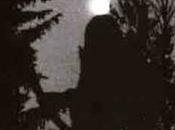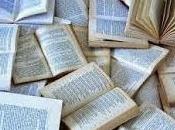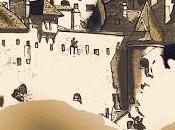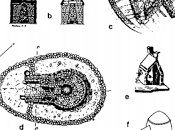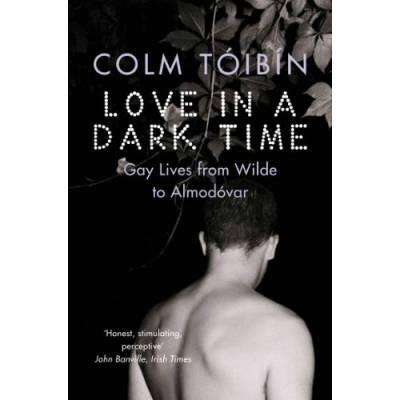 In the introduction to his essay collection Love in a Dark Time (2001, Pan Macmillan Australia), the Irish novelist Colm Tóibín explains how he got involved in writing about some Gay Lives from Wilde to Almodóvar, as the book’s subtitle reads. In 1993, an editor of the London Review of Books had asked him to write a pamphlet about his own homosexuality, but Tóibín was not yet prepared to deal with the subject in an overt, autobiographical way. Later, the same editor tried to win him to the project indirectly, by sending him books by or about gay writers, some of which «were too interesting to resist».
In the introduction to his essay collection Love in a Dark Time (2001, Pan Macmillan Australia), the Irish novelist Colm Tóibín explains how he got involved in writing about some Gay Lives from Wilde to Almodóvar, as the book’s subtitle reads. In 1993, an editor of the London Review of Books had asked him to write a pamphlet about his own homosexuality, but Tóibín was not yet prepared to deal with the subject in an overt, autobiographical way. Later, the same editor tried to win him to the project indirectly, by sending him books by or about gay writers, some of which «were too interesting to resist».
What interested Tóibín in these books was not some theory of homosexuality, but the actual lives of gay artists, how they came to terms with their sexual identity and how this reflected on their work. Not all of them were writers. In the essays that Tóibín eventually wrote for the London Review of Books a painter (Francis Bacon) and a film director (Almodóvar) figure alongside novelists and poets (and a single lesbian poet, the American Elizabeth Bishop). Most of these artists — like Wilde or Thomas Mann — lived in a time that forced them to be secretive or ambiguous about their sexuality, and while many suffered, some, like Bacon or Almodóvar, made no mystery of their private passions and «thrived in adverse conditions». In the America of the 1950s, the novelist James Baldwin had to deal with his being black and homosexual on top of that.
The essays, later collected in Love in a Dark Time, can be read, in Tóibín’s words, as a «tentative history of progress». The collection namely begins with Wilde’s trial for «acts of gross indecency» in 1895 and ends «in a less dark time» about one century later, discussing the elegies written by the American poet Mark Doty on the death of his lover. A closing article focuses on the current situation and future prospects for gay people in contemporary Ireland, where homosexuals are still widely marginalized due to the power and influence of the Catholic church.
The book opens with an introductory essay addressing relevant issues for gay writers and critics, as well as for readers in general. It is vital, Tóibín claims, to rethink Western literature, from Shakespeare to E.M. Forster, taking into account the «homosexual feelings» in it. Not only gay elements should be traced in the work of writers whose homosexuality is only suspected, such as Gogol. More importantly, the bearing that homosexuality has on the work of explicitly gay writers like Walt Whitman should not to be ignored. A gay history of literature is needed because — though since the 1970s the gay rights movement has helped to change things — gay writers still do not feel they are part of a tradition, they lack antecedents and role models. Their predecessors moved alone on forbidden territory, full of doubts and fears. Both writers and critics were trapped in the dilemmas: is a happy ending legitimate/plausible in gay stories? Can gay characters be portrayed only as «tragic queers»? (Maurice by Forster was an exception as it ends happily, but, though written in 1914, it was not published until 1971, after his author’s death).
Rethinking literature in gay terms also involve risks and misreadings. There is no such thing as a ‘gay poem’, only good or bad poetry, observes Tóibín in the essay on the British poet Thom Gunn. Yet Gunn’s poetry changed after he came out. He started out as a very disciplined poet in Britain in the 1950s and moved to California in the 1970s, where the gay liberation movement was in full swing. His poetry changed in time, becoming more relaxed, which was not necessarily to do with his homosexuality. But Gunn was finally able to use personal pronouns other than “you” when referring to a lover in his poems, and to write about ending up in bed with a man.
Life affects one’s writing, of course. In his nine essays, Tóibín quotes from letters and diaries and comments on poems, novel settings, paintings, with great insight and sensitivity. What he “loves” about each poem or painting is the quality of emotion they manage to contain. Pain «writes itself in the lines of a poem» or in the brushwork of a painting, all the more powerful because it is oblique, not immediately detectable. In Elizabeth Bishop’s poems, the dramas of her life are distilled in lines that sound almost casual in their perfection.
Tóibín‘s portrait gallery opens with Oscar Wilde, whose trials at the turn of the 19th century made homosexuality publicly visible for the first time. Reading his letters, we see Wilde change from a clean-living and law-abiding student of Greek into a fashionable socialite and successful playwright. The letters also document the growing importance of homosexual love in his life and how his passion for Alfred Douglas eventually absorbed him completely, at the expense of his wife Constance and their children. Two questions especially interest Tóibín: how could a man as worldly-wise as Wilde be led to face an impossible trial and rush into self-destruction? And how to explain his fierce, enduring attachment to Douglas, the man he held responsible for his own ruin? The answer to this latter question lies for Tóibín in something «which is at the core of homosexual experience in the era before gay liberation». In that dark time, the fulfilment of physical desire, when matched with emotional attachment, created a powerful force, an indissoluble bond between lovers.
If Wilde was consistent in his love for Douglas, the experience of imprisonment and forced labour changed his writing. His last two works, the epistle to Douglas later known as De Profundis and The Ballad of Reading Gaol, can no longer be concerned with beautiful things. They deal with life at its most painful in a new tone, «direct and confessional, serious and emotional».
A few decades later, a fate even worse was reserved to the Irish poet Roger Casement. An official of the British Consular Service in Africa and South America, he resigned from his post to embrace the Irish Republican cause. He was charged with treason and hanged in London. His Black Diaries, packed with accounts of his homosexual encounters in Congo and Colombia, did not help him get a reprieve. His mortal remains were later claimed by the Republic of Ireland, but never his diaries, which are still “dynamite” for the Catholic country.
Still well into the twentieth century, Thomas Mann thought it wiser to sublimate his homoeroticism in literature and pass it off as a trait of German literary history (as Goethe’s friendship with Schiller would confirm). The originals for the fascinating boys of his works — Hans Hansen, Pribislav Hippe, Tadzio — can be found in Mann’s letters and in his wife Katia’s Unwritten Memories, where all of the novelist’s infatuations were recorded.
Since the 1970s, however, after the Stonewall riots in New York which started the gay liberation movement, times have become less and less dark. Gay writers are finally free to write without second thoughts, portraying domestic bliss and indulging in happy ends. According to Tóibín, however, the best poems by gay writers recently published share a sad, elegiac tone. They were written in the 1990s by Mark Doty and Thom Gunn for friends and lovers killed by AIDS. Again, Tóibín finds Gunn’s The Man with Night Sweats outstanding for the amount of emotion buried between the lines, «for the play between the wounded elegiac voice and the poems’ formal, almost impersonal note».
Though informative in many respects (and engaging and funny), Love in a Dark Time is primarily a book on artist written by an artist and as such it bears witness to his author’s love for art and literature. A few of the books discussed, Tóibín points out, were among his favourites well before he knew their authors were homosexual.
Media: Scegli un punteggio12345 Nessun voto finora